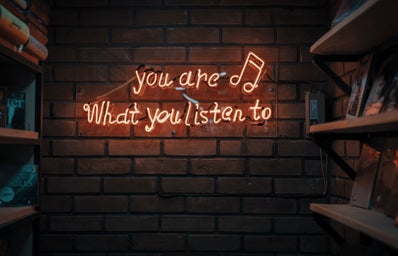When I click on my playlist “Heart of Multitudes” and listen to a combination of Maggie Rodgers, Joni Mitchell, and Beirut, I am suddenly 16 years old again, innocently holding hands with my first kiss while we traverse Manhattan on a search to connect with soul-quenching art. She appears in my sight when I hear this music, seemingly conjured from nothing but memory, fresh and untouched right before me. In between Mitchell’s expressions of unbridled intimacy and Rodger’s exclamations of an undying commitment to her lover, my vision of this girl is the same one I had many years ago.
Why Spotify Playlists?
I have made over 400 playlists throughout the seven years I have had Spotify (408, to be exact). Busy with the responsibilities of any teenage girl, I oftentimes felt separated from my experiences and worried that if I forgot memories, I would forget myself, too. Thus, a moment of meaningful conversation with my high-school confidant, wishing on dandelions with my childhood best friend, and remembering the sounds of my family’s footsteps became described by music. I related Alex G’s “Sarah” to the way I feel while traveling via train; Peach Pit’s “Shampoo Bottles” to the friendships I fostered with my coworkers at the local bakery; Girl Pool’s “Before the World Was Big” to my fears about applying to college.
Connecting music with the connotations of good coffee creamer, the first time I hailed a taxi, and a mother’s love made me feel safe. I believe that if I create these documentations of my niche aspirations and personal experiences, my ideas of the past and reality will be secure in a digital world. With time, I’ve found that my memories are big and raw in this documentation of my life.
Once I saw the number of playlists I amassed, I realized that I feel stable when processing my emotions by listening to music and collecting these songs in a playlist. But, I did not know why. I questioned how upbeat and exciting tunes allow me to mentally remove myself from stressful situations, how the music I listened to in my childhood reminds me of the humanity in people, and how “granola-girl” artists somehow make me want to reinvent my life. In moments I am not fully present in my story, I find comfort in lyrics and melodies that explain the feelings I cannot. Getting lost in the stories of others is something uniquely intimate, and what I like to think of as a safe haven.
So, how does this work?
Beyond scientific research about the effects of music on brain chemicals, I think that music is inherently emotional because of its personal nature. Artists rely on writing music as a venue for making a statement about their experiences, and so in this sense, the fact that people create art from points of misery, bravery, joy, struggle – and all else in between – is inspiring. The reclamation of their experiences gives me hope that I too am able to inspire something beautiful from my reality.
One day when I’m 30, I bet I will be listening to my playlists about my best friends in college. When I’m 50, I’ll probably be listening to songs that remind me of my wedding. And when I’m 70, I hope to be listening to my playlists about immense joy, pain, grief, and love, reliving my experiences and feeling as though I made it in the world. Even if I do not spend the rest of my life curating playlists, I will be grateful for the music that helped my teenage years to be ones of expression and self-discovery.




